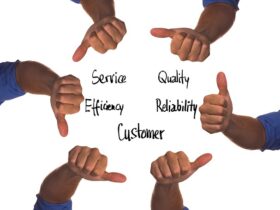A workplace is never just four walls and whirring machines; it is a living, breathing ecosystem wholly powered by the dreams, talents, and resilience of its people. But what happens when such an ecosystem begins to stutter, when stress seems to pervade each nook and cranny, and health becomes an afterthought? That’s where the magic of employee wellness programs kicks in a heaven-sent lifeline for businesses and workers alike. Let us begin this journey of transformation where investment in wellness sends ripples of hope, harmony, and limitless potential.
What are employee wellness programs? Wellness programs are much more than checklists or corporate buzzwords; they are heartfelt promises whispering, “We care about you.” The initiatives take care of physical, mental, and emotional health. They range from simple gestures, like offering fruit in the break room to robust systems providing therapy, on-site fitness centers, or even sabbaticals for recovering from burnout.
Think of a hassled mother pushing deadlines and daycare. Then picture her workplace that offered on-site childcare and a silent room for quiet moments. That is the essence of wellness programs weave empathy and practicality into daily work life.
Why the Contemporary Workplace Needs Wellness
The modern workplaces are a maze of deadlines, Zoom calls, and unending notifications. The grind never stops. The boundaries between work and life blur into oblivion. For many, stress has silently eaten away at them, a shadow they carry with them everywhere.
That is why wellness initiatives are not a luxury but an imperative one that acts to protect people against the unyielding pressures of contemporary work life by arming resources for coping, healing, and growth. From stress management workshops to mindfulness apps, such programs offer an antidote to the bedlam-a haven amidst the turmoil.
How Employees Benefit: More Than Just Perks
Wellness programs for employees are life-changing. They are more than a benefit or a perk; they are lifelines. Let’s take a peek at what it can bring on board:
1. It puts mental health to the fore: Wellness programs bring to the fore that which, more often than not, has been sent to the backburner-mental health. This is where therapy sessions become center stage, along with meditation workshops or apps featuring the soothing voice of Calm. Visualize an employee who silently struggled with self-doubt for years finally finding solace in a safe and supportive environment.
2. Physical Health Thrives: From gym memberships to step challenges, the programs on wellness spur physical activity. They inspire employees to move, stretch, and breathe. Be it a group session of yoga or discounts on personal training, such initiatives build healthier habits that percolate into all spheres of life.
3. A Renewed Sense of Balance: The balance between work and life is no longer a myth, but a reality. Flexibility in hours, possibilities of remote work, and even time-off policies contribute to giving time to employees reconnect with their personal lives, rediscover lost hobbies, and cherish moments with loved ones.
Business Benefits: The Blooming Garden
An organization that nourishes its employees is like a garden tending the soil; the outcome abounds with life. The business return on investment in wellness programs is not merely in terms of numbers but also in the invisible glow of a workplace that pulsates with energy and joy. Here is what businesses stand to gain: Productivity Soars.
A healthy employee is an engaged employee. Wellness programs reduce distractions caused by health issues, allowing workers to focus on their tasks with clarity and creativity.
2. Reduced Turnover, Stronger Loyalty
When employees are valued, they stay. A company that invests in its people garners not just their productivity but also their loyalty. They become ambassadors, singing praises of a workplace that genuinely cares.
3. Lower Absenteeism, Higher Savings
Fewer sick days mean lower healthcare costs. Wellness programs have been shown to greatly reduce absenteeism, creating a workforce that shows up both physically and mentally.
4. A Culture That Dazzles
When wellness is injected right into the very DNA of the enterprise, it changes culture. Employees start to collaborate more, trust each other more, and become proud to be a part of something much bigger.
The Emotional Heartbeat of Wellness Programs
Employee wellness programs go beyond just the metrics and checkmarks; they are at the core of a workplace. They represent words of solace realization that the worker is not metal and steel but human, made of dreams, struggles, and weaknesses. The whisper: “You are seen. You are valued. You matter.”.
Now, put yourself in the place of that lonely team member who has to work from home. Due to a wellness initiative, a weekly virtual coffee chat became their anchor; a small gesture that restored belongingness.
Our Inspiration: Companies Leading the Way
Wellness programs around the world are rewriting the codes of engagement for organizations. Let us draw inspiration from their journeys:
Google: The companies have sprawling wellness centers, fully equipped with everything from gyms and nap pods so staff can recharge any time. Microsoft: This giant organizes mindfulness workshops and other digital tools that help staff deal with stress in high-pressure environments. A Small Local Bakery: With only a few staff members, this company started a wellness lunch once a week on Fridays where the staff cooks and eats together; this helps them bond and cuts down on stress.
No matter how big or how small the budget, these programs remind us that wellness is all-inclusive.
Challenges to Providing Wellness Programs
For as many benefits as wellness programs offer, getting it right isn’t quite easy. The following are some pitfalls companies may encounter:
Limited Budget: Smaller companies will find it challenging to afford elaborate programs, but even on the low end, incentives such as leading walking meetings or offering a free water and hydration station can make the difference.
Employee Engagement: Know what your people want via surveys or focus groups. Consistency: A one-time effort is just not enough. Wellness has to be a continuous process and must be led from the top.
Survey Your Team: Understand what is most wanted by your employees health resources, fitness opportunities, or flexible work arrangements.
Plan Thoughtfully: Design programs in concert with your company culture and budget.
Start Small: Pilot programs will gauge interest in the programs and how well they work.
Evaluate and Evolve: Ongoing feedback is critical to keeping this program relevant and effective.
Leadership’s Role: Guiding the Way
Wellness initiatives are the guiding compass provided to the leadership. Examples set by the managers, either taking mental health days or joining a fitness challenge, set very powerful precedents. Where there is a commitment from the leader himself, this journey of wellness transforms from just some program to a movement.
Stories of Transformation: Lives Changed Through Wellness
There is something more emotionally stirring in the human stories associated with wellness programs. Take Susan; she was a single mother working two jobs, while her firm was accommodating of work hours that allowed her to have evening hours with her children. James was a marketing man who, after years of negating the mental health aspects of himself, finally found peace through therapy sessions courtesy of his employer.
These are not just mere stories, but testaments to how business can change lives.
The Wellness Revolution: The Future of Workplaces
Wellness is not an investment made today but a creation for tomorrow. As businesses create healthier environments, they will, in turn, inspire employees to lead healthier lives away from work. Wellness will become the thread that can link families to communities and societies.
Imagine a future where every workplace is a haven, an enabling environment that nurtures people to grow, innovate, and dream. It is this futuristic vision that wellness programs bring to life.
To care about employee wellness is to care about humanity. It is a statement that businesses are not merely profit-oriented but a community that cares. Let us strive to create work environments that respect not only the work but also the worker’s hearts, minds, and immense potential. After all, as the saying goes, when we take care of the people, everything else falls into place.

































Leave a Review